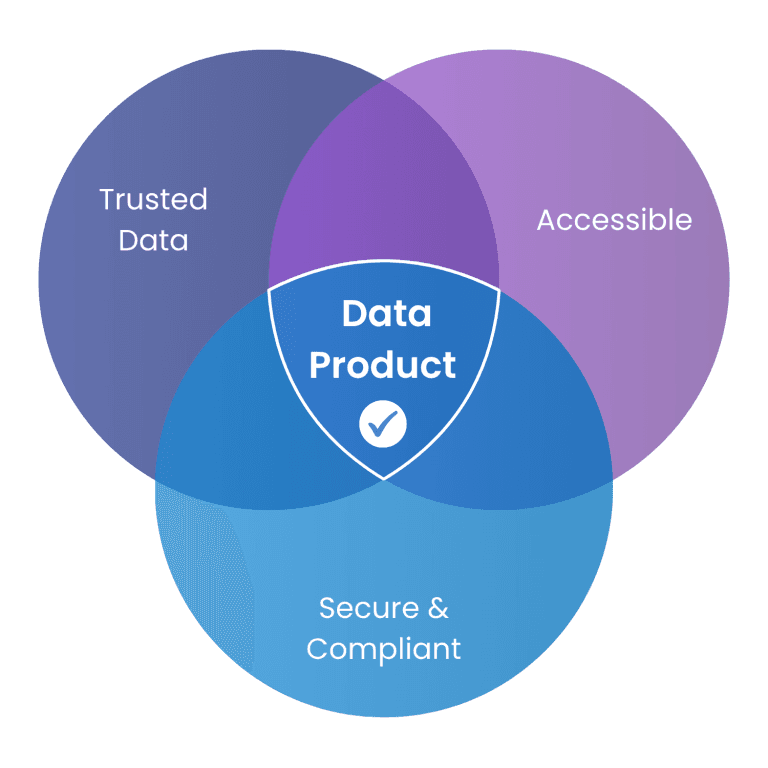Measuring Data Quality of a Data Product
Gone are the days when data sat quietly in spreadsheets. Today, it is stepping up as a Data Product, designed with purpose, owned with intent, and built to deliver value. Any BI tool, machine learning model, or even ESG reporting tools can be considered a Data Product. Organisations are shifting from viewing data as a byproduct to treating it as a strategic Data Product: with clear ownership, purpose, and measurable value.
At Clever Republic, we believe that trustworthy data is at the heart of every successful Data Product. That’s why, in this new blog series, we’re diving into one of the most important, but often overlooked, aspect: measuring Data Quality of Data Products. But before we jump into real-life examples, let’s start at the beginning.
What is a Data Product?
Depending on the organisation, a Data Product is generally defined as a reusable ‘package’ containing data which solves a specific business problem or answers a key business question. It includes not only the data itself, but also the necessary context about the data and how to access it. In this way, a Data Product contains data that is understandable, useable, and accessible for anyone.
Aspects of Data Products
Just like any product, a Data Product has a few critical aspects. It’s up to the Data Product owner to keep them in top shape. A great Data Product has the following aspects:
Trusted Data: A Data Product is only as good as the data behind it. If the Data Quality is poor, the outcomes will be too.
Easy Accessibility: Great Data Products are ready when users need them. Owners should make sure the right teams can easily find and use them.
Secure and Compliant: Data Products must meet all security, governance, and compliance requirements: no exceptions.

Why is Data Quality essential for Data Products?
A Data Product is only as good as the data behind it. Just like a physical product must meet certain standards of consumers, a Data Product must meet certain standards of data to support business decisions. Without high Data Quality, even the most well-designed Data Product becomes a liability. This will lead to misinformed decision-making, resulting in loss of trust in Data Products. Making Data Quality an essential part of Data Products, which should not be overlooked.
Addressing Data Quality issues for Data Products requires meeting the six Data Quality dimensions guaranteeing that the data is accurate, complete, consistent, timely, valid, and unique. At Clever Republic, we have a team of experts to help implement and maintain Data Quality practices at your company, ensuring your Data Product is fit for its intended purpose.
What's coming next?
Over the next few blogs, we will walk you through real-world use cases of Data Products. We will show how to measure the Data Quality of Data Products by using Data Quality tools, such as SODA and Collibra. Each blog will include practical tips, real examples, and a peek into our approach of this at Clever Republic using our own Data Products made for our fictive company Groove.
Financial Data Product – “Pension Payout”
Our first Data Product focuses on financial operations and is called Pension Payout. It calculates the exact monthly pension payment for every employee at Groove. Accurate, timely, and complete data is critical. Without high Data Quality, payout errors can occur, leading to compliance risks and employee dissatisfaction. Pension Payout transforms raw payroll and HR data into trusted financial insights. It reduces manual effort, eliminates uncertainty, and ensures every euro is accounted for.
ESG Reporting Data Product – “Greenhouse Gas Impact”
Our second Data Product supports ESG and sustainability goals. Named Greenhouse Gas Impact, it enables organisations to track, analyse, and report Scope 1, 2, and 3 emissions in line with CSRD requirements. Low Data Quality turns ESG reporting into a compliance headache. Greenhouse Gas Impact solves this by automating data collection from logistics, utilities, and suppliers. It standardises emissions calculations and ensures audit readiness. The product uses Data Intelligence to establish full traceability, define ownership, and clarify terminology. This builds confidence across sustainability and compliance teams.
AI Model Data Product – “Customer Churn Prediction”
Our third Data Product uses artificial intelligence to help Groove retain customers. Customer Churn Predictor forecasts which users are likely to stop using the platform. The model analyses patterns like purchase behaviour, engagement, and support interactions to generate churn predictions. Without clean data, the model risks producing false alerts, wasting marketing budget, and damaging trust in AI. To avoid this, we embed strong Data Quality controls and AI Governance from the start. Every prediction is explainable and actionable. The insights empower marketing and customer success teams to create timely and personalised campaigns. These include exclusive offers and targeted re-engagement tactics.
Final thoughts
Treating data as a product is a necessity, but no Data Product can succeed without high Data Quality and strong governance. Whether you’re in finance, compliance, AI, or sustainability, ensuring trust in your data is the foundation for real business value. Follow along in our mini-blog series and discover how to build high-quality, high-impact Data Products per use case.
Need help measuring or improving your Data Product’s quality? Let’s talk. At Clever Republic, we bring together strategy, governance, and technology to make your Data Products trusted and future-proof. Get in touch with us!
